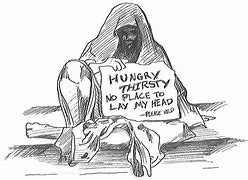I don’t think about things I don’t think about.
Do you ever think about things you do think about?
The homeless population in the United States has surpassed 650,000 people. That’s people…mothers, fathers, children…real people…individuals. Real, live, breathing human beings. They are not just some coagulated mass of human refuse; they weren’t dropped off by an alien spacecraft from a far, beyond planet. They are our people.
But we don’t wish to think of them that way; we don’t wish to think of them at all, until we see them laying about in parks and streets.
We see them as the dirty masses which despoil our streets, parks, any available space. They are all a bunch of derelicts. It satisfies our conscience to say they are all a bunch of drug addicts or alcoholics.
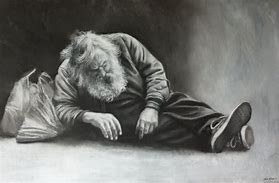
Why doesn’t somebody do something to clear them out, get them out of sight?
Shouldn’t the city be putting them somewhere?
For that, the solution is simple, get them out of that park or off that street. Out of sight; out of mind. Get them as far away from our sanitized environment, because, we are so much better.
Let’s take for example, San Francisco and Xi Jinping’s recent visit. The Governor ordered the streets to be swept of homeless, so as to make a better impression on a visiting dignitary. We can argue about even wanting to make an impression on the leader of China, but that would just be a distraction. Did you ever think about where all those people went? Did they just cease to exist until he left? Hint: Go to the areas away from the “parade route”.
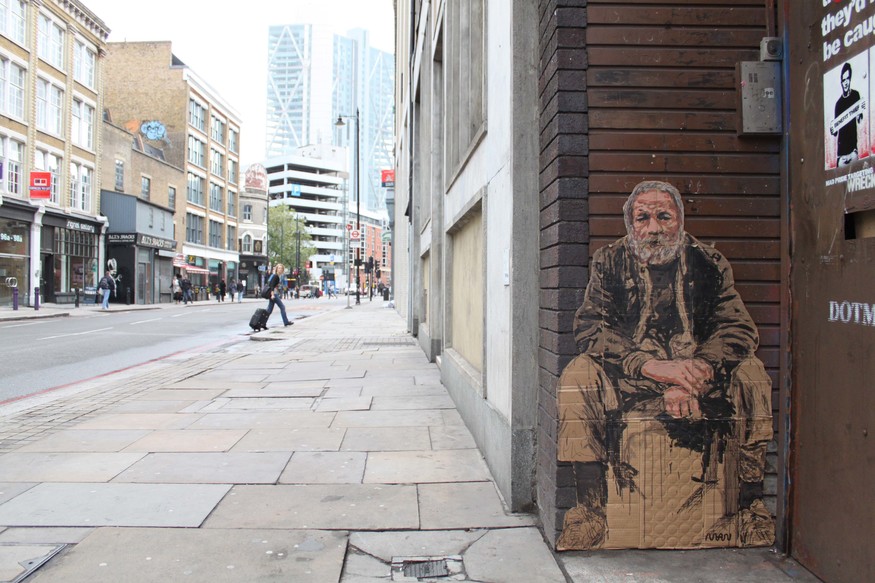
Wahington, DC often sweeps the homeless away from the tourist areas. There are no more homeless on the streets leading down to Constitution and Independence Avenues. God forbid we see them anywhere near the White House or the hallowed halls of Congress. A lot of refreshment and tee shirt vendors lining the streets, but no homeless. Have you thought about where those people went? Did they just cease to exist. Hint: Drive up around the back of Union Station. There they are, huddled in tents and wrapped in blankets.
In Honolulu, there is a beautiful park just off Ala Moana Boulevard, just before entering Waikiki. There was a large homeless encampment there. Definitely don’t want to see the great unwashed that close to the tourist heaven. So, they were evicted from the park. Where did they go? Hint: They now camp along the side streets leading down toward the piers along the highway out near the airport.
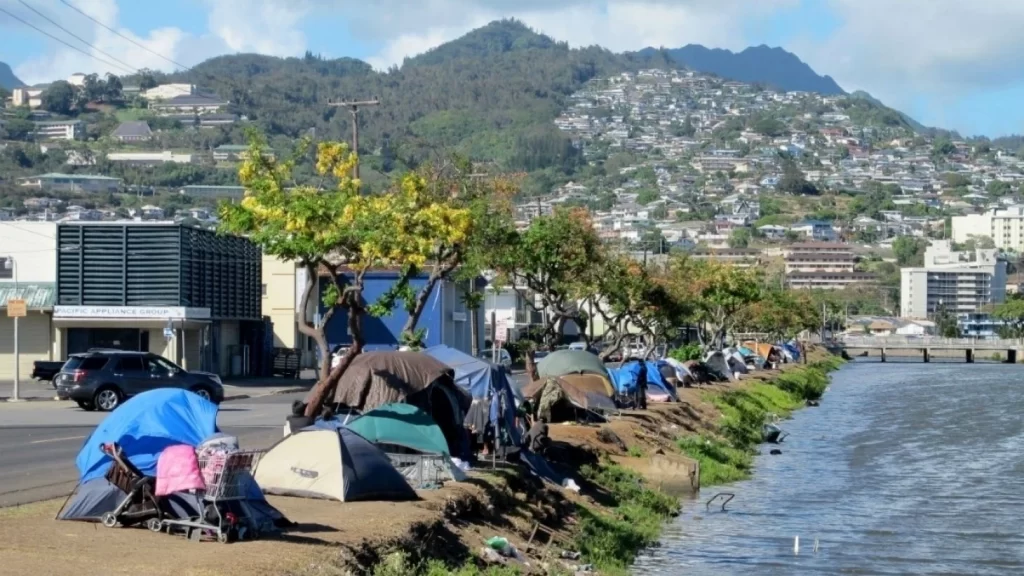
These stories repeat themselves in our largest cities and our smallest hamlets. Homelessness has become pervasive. A pervasiveness that seems to expand on literally a daily basis. There seems no solution in sight.
Now we are seeing an ever-growing influx of migrants from almost all nations illegally entering the country through our uncontrolled southern border. We are even seeing more illegal entries along our northern border, which traditionally been more secure. They come without entry documentation and are “processed” and released into the country with an immigration court date some years away, but the illegal entry problem is a discussion for another day. What percentage, how many, will find themselves unable to find jobs in a more and more restricted work environment? What happens when someone left their former country because they lived in poverty, on the lower margins of their society, and they come here in search of a better life, not fluent in the language, not having acceptable documentation, and possessing few skills, only to join the most desperate level of our society? How will they be able to take advantage of the simple needs for living…food, clothing, shelter, employment?
How many of them will join the ranks of the homeless? Let’s be conservative and say only 1% of the recorded 7,000,000 people who crossed illegally just in the past three years will join the homeless population. That’s 70,000 additional homeless people!
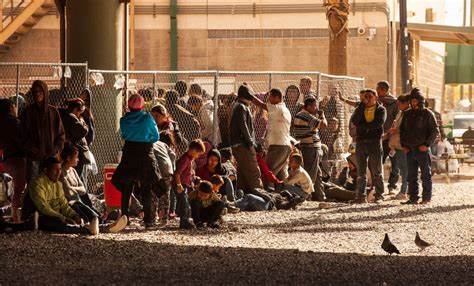
We are already seeing the effect in El Paso, Texas. The overwhelming influx of illegal migrants has choked the streets of El Paso, with people huddled against walls along virtually every thoroughfare in the city. Some of our larger cities are emptying homeless shelters to make room for newly arrived migrants…who are homeless. Some hotels are being used as shelters for migrants, hotels which were not used for homeless shelters.
And the beat goes on. It’s a litany of failure. But why does it have to go on this way? The problem is complex, the solution is complex, but our answer is simple.
I don’t think about the things I don’t think about.
As a nation, we don’t do well with complex problems. If we can’t find THE answer between periods of a hockey game, then we don’t want to deal with it.
Our first best solution to complex problems is “let the government do it”. How has that worked lately…or ever? Our second best solution is throwing money at it. And isn’t that something we learned from our government? Both of our “best” choices have worked really well, haven’t they?
All right then, what is the solution?
There has to be one; we are not a stupid people.
Interestingly, back around 2015, the City of Honolulu came up with a great plan. In the center of the city was an abandoned school. The plan was to renovate the school and use it as a homeless resource center. Classrooms were to be turned into apartments, the gym was to be a recreation center, the locker rooms were to be showers and sanitary facilities, the cafeteria was to be a communal dining hall, playground equipment was to be left for the children. Doctors, nurses, dentists, psychologists had agreed to make regular visits. Job counseling, training and job placement were to be done on site. The police had agreed to establish a substation at the site to safeguard the residents of the center. So, what went wrong? Not something you would expect. A homeless advocacy group said they would not support the plan because of the presence of the police; the police would intimidate and frighten the residents, police who were to be there to protect a vulnerable population. I guess, sometimes our best friends can be our worst enemies. The result? The homeless population continues to grow.

And again…what is the solution?
As a nation, we have not been particularly good at solving complex problems…there’s that “thinking” thing again.

We have to get past the very broad definition of “homeless” and dig deeper into “who” the homeless are. We have an abundance of data very generally defining “homeless”, and its all very good data, but it leads us to such sweeping generalizations as “they are all drug addicts”, “they are all alcoholics”, or “they are all just lazy”. Haven’t we heard that and more?
In order to get a much clearer picture of who these people are, we must disaggregate the data. Data disaggregation means we must take the large category, “homeless” and break it down into more specific sub-sets. When the data are broken down, we can discover the unique differences among the groups and reveal significant disparities. That disassembling of the data will almost immediately begin to show us possible solutions, some of which will be difficult choices which we as a society may have to make. Doing this analysis will also clearly show mistakes of the past predicated on enabling vulnerable people to “fend for themselves”.
At present we have a “band-aid” approach to the homeless crisis.
Remember…650,000 people…homeless people, and remember, with the huge influx of undocumented migrants, that number can balloon quickly by another 70,000 or even 100,000…conservatively.
Consider how many of those homeless are young people. On any single night, there are 34,700 unaccompanied youth counted as homeless. 90.6% were ages 18-24, and 9.3% were under the age of 18. 40.8% of homeless youth have no shelter, sleeping in cars or someplace not fit for human habitation.
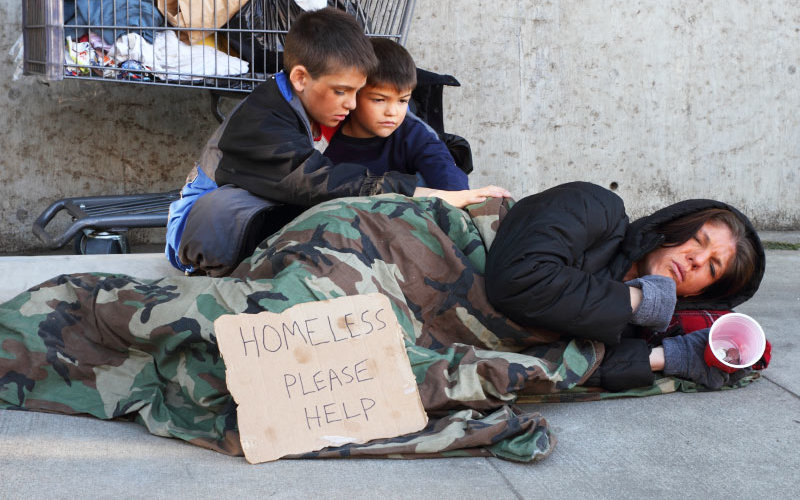

Consider there are 38,000 homeless veterans, those who gave up part of their lives to serve the country. Many suffer from PTS and are in need of treatment. Many returned to a society that had no use for their skills.
Consider how many are “working poor”, those who have a daily job, but never make enough money to pay for decent housing.
Consider how many have no marketable skills in an ever more technological society.
Consider how many don’t have simple day to day life skills.
Consider how many are mentally ill.
Consider how many are, indeed, drug addicted.
Consider how many are, indeed, alcoholics.
Consider how many fall into categories we haven’t even thought about.
Homelessness is a complex problem, a national complex problem, and it surely appears we do not do well with complex problems.
There’s that I don’t think about things I don’t think about part.
Homelessness is not just something we throw money at and feeling content we have done something about it. Look how often we throw money at something expecting that it “buys” a result. We have thrown huge amounts of money at electric vehicles, and they have not even begun to fulfill the promise of “green energy…and likely won’t. We have thrown billions at student loan debt, and that same student debt continues to grow. We have thrown billions at the southern border problem, and illegal entry grows exponentially.
Our best attempts are the homeless shelters, feeding programs, and outreach initiatives. Make no mistake, those programs begin to step into the crisis in at least an attempt to address the needs.
Unfortunately, they are, through no fault of their own, woefully inadequate.
There is one local program in my area which has begun a feeding program for homeless people. At their center, a homeless person can go and get a meal two or three times a week. They are also beginning a service to deliver meals to homeless wherever they can be found…one meal, two or three times a week.
Toward an understanding
In 1943, Abraham Maslow, an American psychologist, formulated a theory of human motivation. His theory was arranged in a five tier model of human needs. The five levels of the hierarchy are physiological, safety, love/belonging, esteem, and self-actualization. The most basic needs are the physiological: air, water, food, heat, clothing, shelter, sleep. And if you are wondering, reproduction is also a fundamental need for human beings.
Consider, of those physiological needs, the only relative surety of a homeless person is air. They cannot be assured of a dependable source of any of the rest. As well meaning as it may be, a feeding program of two or three meals a week, does not replace the basic need for twenty-one nutritionally adequate meals per week, which most of us have available.. Shelter programs which offer a “warm place to sleep” when the temperature falls to freezing, does not make sleep on cold nights above freezing conducive to healthy living. A tent, a sleeping bag, or a blanket along a city street, in a park, or in an abandoned building do not constitute shelter.
If the physiological needs can be achieved, then the next tier are the safety needs of health, personal security, emotional security, and financial security. None of these are attainable for a homeless person, making them an extremely vulnerable population.
If a person cannot achieve the first two tiers, then what chance is their for attaining the next three?
So, what do we do?
We can, of course, do what we are doing and hope against hope that homelessness will be solved. What was it Einstein said? Insanity is doing the same thing over and over and expecting different results.
There is another choice, at least another starting point.
If we can make “green energy” a national priority; if we can make “forgiving student debt” a national priority, if we can make “solving the border problem” a national priority, why can we not make solving the “homeless crisis” a national priority?
We either have the will or we don’t have the will.
I refuse to be cynical about the answer to that.
More to come…

